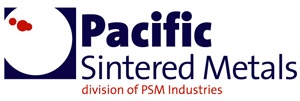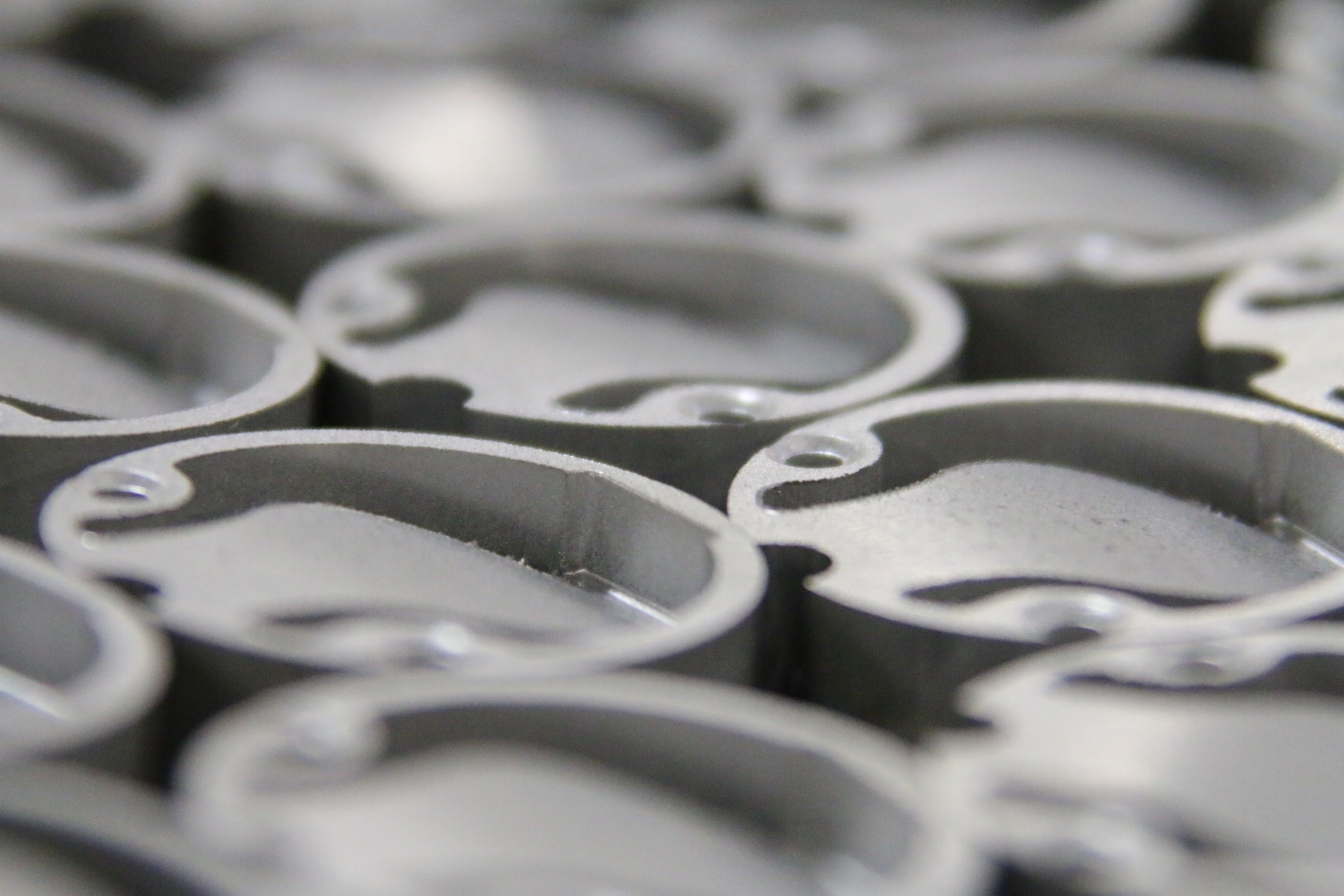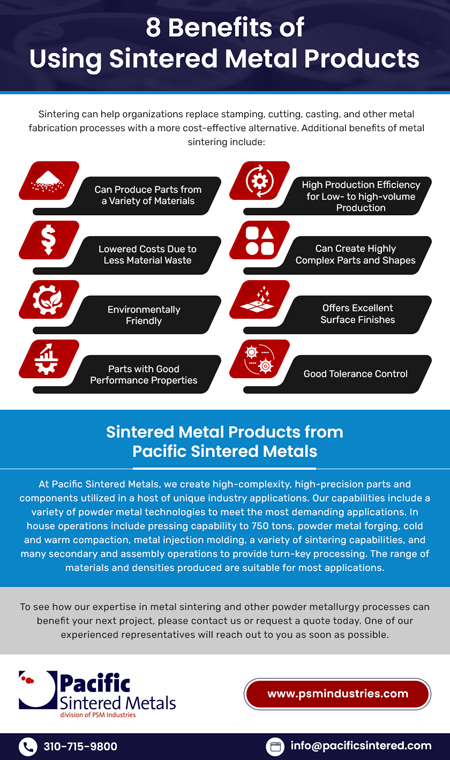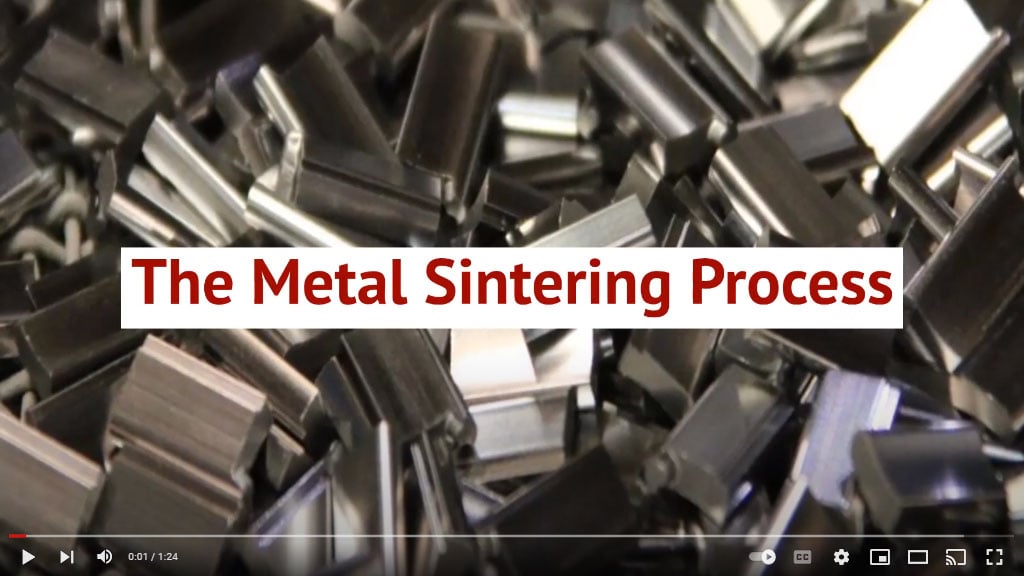Powder metallurgy is the term for an array of processes used to create structural metal parts and components. The metal powders themselves are derived from raw metal materials. The material is converted to powder form through the atomization process.
The powder metallurgy process used to create metal products includes the sintering process. Sintering is the thermal process applied to the formed component. Once completing the sintering process, the metal particles are fused and the structural integrity on the part is achieved.
First, the manufacturer fills a mold or die with the desired powdered metal material at room temperature or in some cases the die is heated. The powder gets compacted at high pressure until it forms the desired design shape. The amount of pressure used will vary depending on the metal material and the required density of the final part.
Once this step reaches completion, the formed metal is removed from the mold or die and placed into a sintering furnace.The furnace temperature will depend on the material and density required. As a continuous thermal process, sintering is typically done in a belt conveyor, push, or batch furnace within a carefully controlled atmospheric environment.
The furnace heats the metal form to a specific temperature. The amount of time this takes will vary depending on the application in question, as well as the materials being used. As sintering occurs, the metal particles bond together to a create stronger and more rigid metal form. Some slight shrinkage may take place during this time, which designers must account for when creating the initial design.








